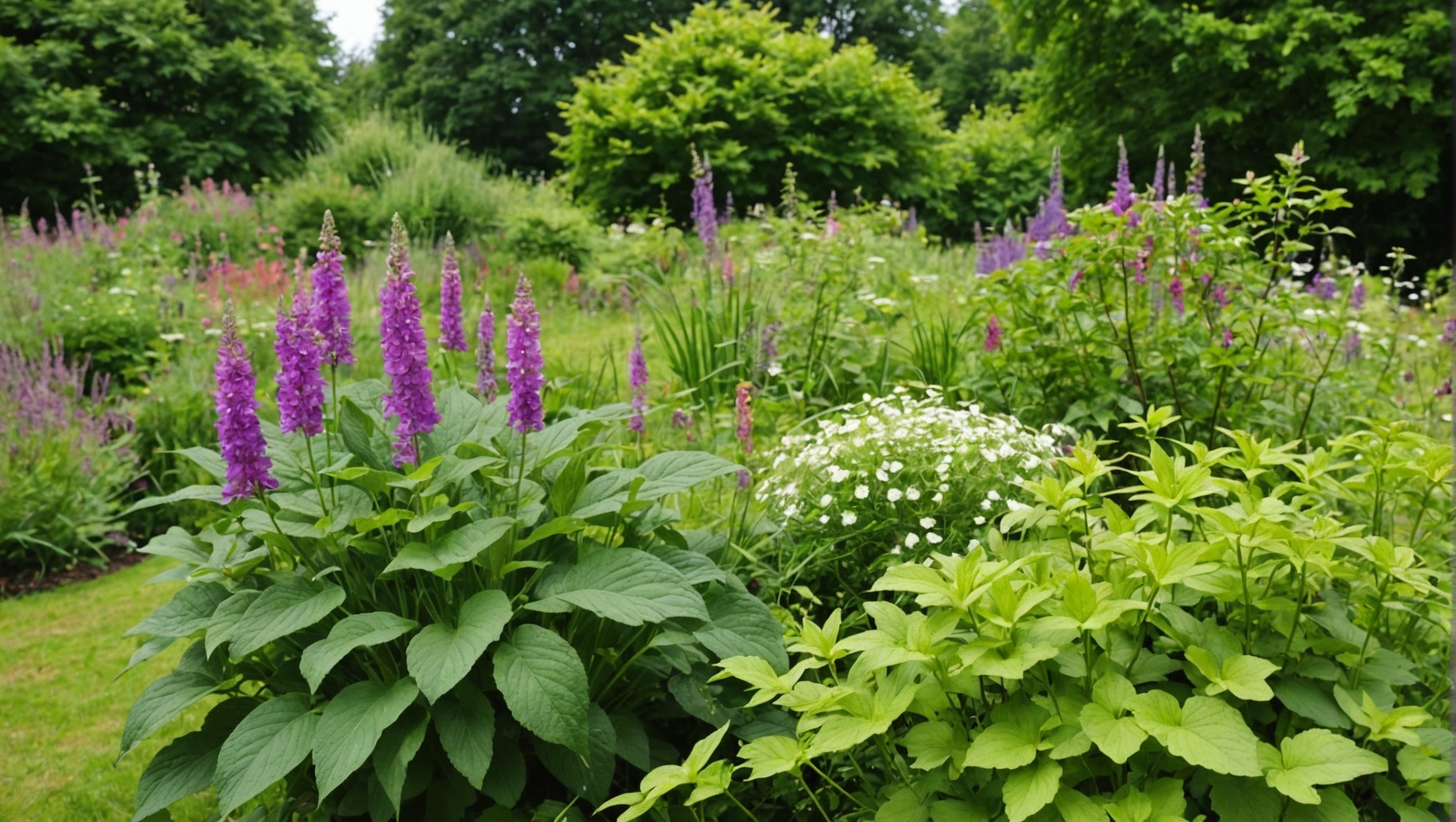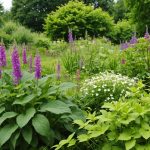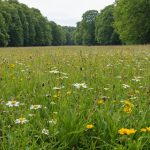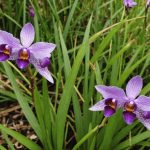Invasive plant species can wreak havoc on British gardens, outcompeting native flora and disrupting local ecosystems. Identifying these intruders is the first step towards effective management. Armed with smart strategies, you can safeguard your garden while enjoying its beauty. This guide will help you recognize harmful plants and implement sustainable practices to protect your cherished outdoor space. Prepare to transform your garden into a thriving haven for local wildlife and a vibrant testament to nature’s harmony.
Understanding Invasive Plant Species
Invasive plant species are non-native plants introduced to an area where they do not naturally occur. These plants can spread rapidly, outcompeting native flora and disrupting local ecosystems. The impact of invasive plants extends beyond just the ecological, affecting economic aspects as well.
A découvrir également : Protecting Marine Turtles: Innovative Strategies for UK Coastal Developments to Preserve Nesting Sites
Ecological Consequences
The ecological consequences of invasive species are significant. They can alter habitat structures, reduce biodiversity, and change nutrient cycling within ecosystems. For instance, invasive species often monopolise resources such as light, water, and soil nutrients, making it difficult for native plants to survive. This can lead to a decline in native species and an imbalance in the ecosystem.
Economic Impacts
Economically, invasive plants can be costly. They can damage crops, leading to reduced agricultural yields and increased management expenses. The cost of controlling these species and repairing the damage they cause can be substantial, impacting local economies and agricultural practices.
A découvrir également : Empowering UK Residents: Top Ways to Support the Conservation of Local Native Orchid Species
Importance in British Gardens
Addressing invasive species in British gardens is crucial. These gardens can act as a starting point for invasive plants to spread into the wild. By understanding and managing invasive species, gardeners can help protect native biodiversity and prevent broader ecological and economic impacts. Encouraging the use of native plants is a practical approach to mitigating these issues.
Identifying Invasive Plants in Your Garden
Recognising invasive plants in your garden is essential for preserving local biodiversity. To effectively identify these species, focus on key identification features such as growth patterns, leaf shapes, and flowering times. Invasive plants often exhibit aggressive growth, spreading quickly and forming dense mats that overshadow native flora.
Common Invasive Plants
In British gardens, some prevalent invasive species include Japanese knotweed, Himalayan balsam, and giant hogweed. Each of these plants has distinct visual characteristics. For instance, Japanese knotweed is known for its bamboo-like stems and heart-shaped leaves, while Himalayan balsam boasts pink, orchid-like flowers. Giant hogweed is notable for its towering height and large, umbrella-shaped flower clusters.
Resources for Identification
Utilising resources can greatly aid in the identification process. There are various apps and websites designed to help gardeners recognise invasive species. For example, the PlantNet app allows users to identify plants through photographs. Additionally, local guides and organisations often provide valuable information and support for managing invasive plants. Engaging with these resources not only aids in identification but also empowers gardeners to take proactive steps in managing their gardens, contributing to the protection of native ecosystems.
Signs of Invasion in Your Garden
Recognising the invasion indicators in your garden is crucial for maintaining its health and preserving local biodiversity. Visual signs of invasive plant presence often include unusual growth patterns, such as plants spreading aggressively or forming dense clusters that overshadow native species. These symptoms of invasives can be identified by observing the garden’s layout and noting any plants that appear to dominate the space.
Changes in local biodiversity are another significant symptom of invasives. A noticeable decline in the variety of native plants or a reduction in the presence of beneficial insects and wildlife can indicate an invasive species issue. These changes often occur because invasive plants outcompete native species for resources, disrupting the delicate balance of the ecosystem.
To ensure early detection, implementing effective monitoring techniques is essential. Regularly inspect your garden for new plant growth and unfamiliar species. Keep a garden journal to track changes in plant health and biodiversity. Additionally, consider using technology such as plant identification apps to aid in recognising invasive species. By staying vigilant and informed, gardeners can take proactive steps to manage invasives, safeguarding their gardens and contributing to the overall health of the environment.
Preventive Measures for Invasive Plants
Implementing effective prevention strategies is key to managing invasive plants in your garden. Thoughtful garden design plays a crucial role in minimising the risk of invasives. By strategically planning your garden layout, you can create an environment less conducive to the spread of non-native species.
Design Considerations to Minimize Invasives
When designing your garden, consider using barrier methods such as root barriers to prevent the spread of invasive species. These physical barriers can restrict the growth of aggressive plants, ensuring they do not encroach upon native flora. Additionally, incorporating raised beds or containers can further limit the spread of invasive plants by isolating them from the rest of the garden.
Plant Selection: Native vs. Invasive Species
Choosing the right plants is vital. Opt for native species over invasive ones to promote local biodiversity. Native plants are adapted to the local environment and are less likely to dominate the ecosystem. They also provide essential resources for native wildlife, supporting a balanced ecosystem.
Physical Barriers and Other Preventive Techniques
Beyond physical barriers, other preventive techniques include regular garden maintenance and monitoring. Remove any early signs of invasive growth promptly to prevent further spread. Employing these strategies can help maintain a healthy garden, preserving local biodiversity and preventing the introduction of invasive species.
Management Strategies for Existing Invasions
Effectively managing existing invasions requires a combination of management techniques and removal methods to restore balance in your garden. Safe removal of invasive plants is crucial to prevent further damage to the ecosystem. Begin by manually extracting smaller invasives, ensuring the entire root system is removed to prevent regrowth. For larger infestations, consider using controlled chemical treatments, following environmental guidelines to minimise impact on non-target species.
Restoration practices play a vital role in recovering native plant life. After removing invasives, reintroduce native plants that are well-suited to the local climate and soil conditions. This not only helps restore biodiversity but also strengthens the ecosystem against future invasions. Native plants often have established relationships with local wildlife, providing essential habitats and food sources.
Implementing long-term management plans is essential to prevent re-invasion. Regular monitoring and maintenance are key components of these plans. Conduct periodic inspections to detect any new invasive growth early. Additionally, maintain a diverse plant community to reduce the likelihood of invasives establishing a foothold. Employing these strategies ensures a sustainable approach to managing invasions, preserving the health and integrity of your garden’s ecosystem.
Resources and Support for Gardeners
Navigating the challenges of invasive plants can be daunting, but gardening resources and community support offer invaluable assistance. Numerous organisations focus on invasive species, providing essential information and guidance. For instance, local environmental agencies often have dedicated sections on their websites outlining best practices for managing invasive plants.
Community Initiatives and Support Groups
Engaging with local organizations and community initiatives can significantly enhance your gardening efforts. Many areas have support groups where gardeners share experiences and strategies for tackling invasives. These groups foster a sense of community, offering collective wisdom and resources to help manage and prevent the spread of non-native species.
Educational Resources for Continuous Learning
For those keen on expanding their knowledge, a wealth of educational resources is available. Workshops, seminars, and online courses provide insights into the latest management techniques and ecological impacts of invasive plants. These learning opportunities empower gardeners to make informed decisions, ensuring their gardens thrive while preserving local biodiversity.
By leveraging these resources and support networks, gardeners can effectively address the challenges posed by invasive species. Access to information and community collaboration not only aids in managing invasives but also contributes to the broader goal of environmental conservation.
Visual Aids and Tools for Gardeners
Visual aids are invaluable for gardeners aiming to effectively identify and manage invasive plant species. Visual identification tools enhance understanding by providing clear and detailed representations of plants, aiding in accurate identification. Diagrams and educational materials can highlight key features such as leaf shapes, growth patterns, and flower structures, making it easier to distinguish between native and invasive species.
Suggested Diagrams and Educational Materials
Incorporating diagrams into your gardening toolkit can significantly improve your ability to identify plants. Look for educational materials that feature detailed illustrations or photographs of both native and invasive plants. These resources often include side-by-side comparisons, emphasising differences that may not be immediately obvious. Such visual aids are particularly helpful for novice gardeners who might struggle with plant identification.
Recommended Tools and Apps
To further assist in monitoring and managing your garden, numerous tools and apps are available. Plant identification apps, like PlantNet, use photographs to help identify species, providing instant feedback on potential invasives. Additionally, garden monitoring apps can track changes over time, alerting you to any unusual growth patterns. These visual identification tools empower gardeners to take proactive steps in maintaining their gardens, ensuring they remain healthy and free from invasive threats.
















